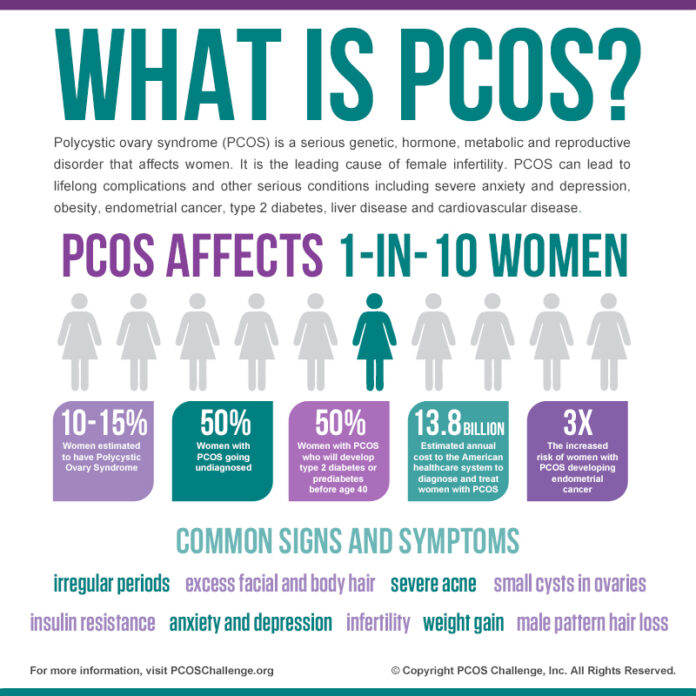
This post details my journey with Polycystic Ovarian Syndrome with a Sulfite Intolerance. The diagnosis and my commitment to a healthy, low sugar, low sulfite diet has helped me with my struggle with infertility, reduced my risk for diabetes and much more.
Diagnosing My PCOS
After struggling with my menstrual cycle for years, I was diagnosed with polycystic ovaries through blood work such as LH and FSH . I lacked traditional features such as acne, weight gain, excessive hair growth, but the blood tests were diagnostic. The truth is that a woman with Polycystic Ovarian Syndrome can have all or even just a couple of the symptoms.
The Treatment I Chose
My doctor and I then decided that starting oral contraceptives would be the best treatment for me. Medication can help prevent long term effects from the uncontrolled hormones. Complications of untreated PCOS can include, infertility, weight gain, acne, endometriosis, ovarian cysts, Prediabetes (eventually diabetes) and much, much more. Once I started the oral contraceptives, I noticed a quick improvement in my menstrual cycle and the cramping that had almost become unbearable.
All Was Good Until Angioedema Took Over
Until the diagnosis of Idiopathic Angioedema , I stayed on this treatment. I decided, with my doctor, to stop The Pill at that time because the hormones can worsen angioedema. There was a noticeable improvement in my angioedema symptoms but the PCOS symptoms worsened. I didn’t think much of this at the time. I was too preoccupied with my new diagnosis of angioedema.
Then Came Infertility
It wasn’t until I started trying to conceive my first baby that the PCOS became front and center. I tried for a year, unsuccessfully, to conceive. Finally, when I went to a Reproductive Endocrinologist, she reviewed my menstrual history, looked over my labs and did a pelvic ultrasound (which she said showed textbook ovarian cysts covered in cysts). She tied it all together for me. Polycystic Ovarian Syndrome, family history of diabetes, lab tests indicating insulin resistance and infertility can all be connected to one another. She made it very clear to me that unless I cut out sugar and unhealthy carbohydrates, I would likely continue to struggle. Prior to this visit, I ate healthy overall but did have a sweet tooth. She put me on phase 2 of the South Beach Diet, Clomid and said she would see me back in a few months.
The Clomid was unsuccessful which in itself felt like another blow. However, within 6 weeks of starting the South Beach Diet, I was pregnant! When I went in for my confirmation ultrasound even the doctor was surprised at how strictly I had followed the diet. Honestly, I still remember the exact date she put me on that diet and I took it very seriously. That’s the date I associate with the start of the creation of my family, my beautiful children.
Low Glycemic Diet Is Life For me
Ever since then, I have followed a low glycemic diet to some extent. Stricter when I’m trying to get pregnant or feel confident in a swimsuit. A low sugar/low carb diet has been the most effective diet for me to reduce my belly fat. I’m a little less stringent around the Holidays or on vacation. In women with PCOS, a low glycemic diet is so important because of the link to insulin resistance. Low sugar, low carb diets can help control menstrual cycle bleeding, cramping, abdominal weight gain and acne. Dietary changes are not always enough, so you should discuss medications and a specific treatment plan with your doctor.
The Diet Connection With PCOS and Sulfites
Fortunately for me, low sugar, low carb and a low sulfite diet can all coexist. Because sulfites can be used in the making of high fructose syrup and certain food dyes (Red #40, Yellow #5, Caramel Color) by avoiding most foods with these additives, I naturally end up reducing my sugar and carb intake. Also, keeping my insulin resistance and PCOS in check helps reduce my angioedema flare ups. Any reduction in stress on my body helps. This low glycemic diet also helps control my Prediabetes.
Finding My Way Around The Lack of PCOS Awareness
It was not a straight road for my diagnosis of PCOS. While it seems to be talked about more at this time, when I first saw a doctor at the age of 17, because I didn’t look like a ‘typical’ pcos patient, he told me it may just be my normal and come back after the age of 18 if it wasn’t better. It wasn’t until about 10 years later that it started becoming mainstream to treat PCOS with metformin to control the insulin resistance connection.
Back then, I don’t ever remember PCOS campaigns or celebrities talking about this condition. Still, the key for me was to keep asking, keep seeking and discussing my concerns with my doctors until I found the right one to address my symptoms and help me. My whole intention of this blog and sharing my journey is to encourage others who don’t feel their best, who feel not well, tired, fatigued, in pain and more to keep searching, keep asking and you will find your truth. You can feel better. My hope is that one day you will remember the exact date you found your answer and turned your health around.




[…] thyroid issues, I was looking for healthy ways to build muscle back and lose some fat to control my PCOS. I knew I wouldn’t do anything drastic and eating the South beach Diet, alone, just didn’t […]
Comments are closed.